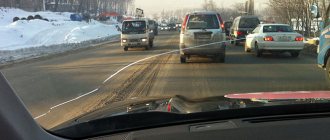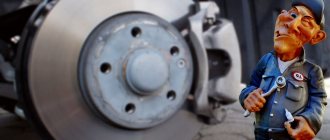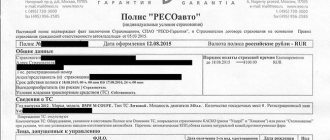Good afternoon, dear reader.
This article will discuss the changes being made to the Rules for technical inspection of vehicles from February 22, 2021.
I would like to note right away that the technical inspection procedure itself has not undergone significant changes. If we talk about a personal car of category B, then a diagnostic card is required only before purchasing an insurance policy. And to get it, you need to go to the nearest technical inspection point, where the car will undergo a technical condition check.
However, changes are being made to the list of requirements for cars. These are the ones we will talk about today:
- Power steering.
- Headlight lenses.
- Headlights.
- Windscreen wipers.
- Studded tires.
- Gas equipment (GBO).
- Warning triangle, first aid kit, fire extinguisher.
- Leakage of oils and working fluids.
- Change in vehicle design.
- Additional requirements for vehicles.
So, Appendix 1 to the technical inspection rules contains a table in accordance with which the vehicle should be checked.
Power steering
16. The use of parts with traces of residual deformation, cracks and other defects in the steering mechanism and steering drive is not allowed
16. The use in the steering mechanism and steering drive of parts with traces of residual deformation, with cracks and other defects, inoperability or absence of a steering damper and power steering provided by the vehicle manufacturer in the operational documentation of the vehicle is not allowed. Leakage of working fluid in the power steering hydraulic system is not allowed
Starting February 22, 2021, the power steering and steering damper will be checked during the inspection. Please note that we are talking about amplifiers of all designs , i.e. hydraulic boosters, electric boosters and others. If the car was originally equipped with such an amplifier, then it should work.
As for the hydraulic booster, there is an additional requirement for it. There should be no leakage of working fluid.
Note. Previously, the requirements of this paragraph did not apply to vehicles of category L (motorcycles, quadricycles, etc.). However, from February 22, steering will be checked on all vehicles except trailers.
How to pass a technical inspection for compulsory motor liability insurance in 2018?
The current procedure is regulated by the provisions of Federal Law 170-FZ “On technical inspection of vehicles...” dated July 1, 2011. Maintenance should be carried out periodically, depending on the type of transport and the period of its use. Based on the results of the examination, a special document is issued - a diagnostic card.
New passenger cars are exempt from maintenance for 3 years from the date of release due to the instructions in clause 1, part 2, art. 15 No. 170-FZ. The 3-year exemption period from maintenance also applies to:
trucks with a permissible weight of up to 3.5 tons;
motorcycles;
trailers;
semi-trailers.
For passenger cars aged from 3 to 7 years, inspection is carried out once every 2 years, for older ones - annually.
The rules for passing technical inspection stipulate that there are special categories of vehicles that must be checked every six months. This is about:
passenger buses;
trucks intended for the transport of people with more than 8 seats;
passenger taxis;
Vehicles that transport dangerous goods.
In 2021, a unified automated information system for technical inspection (EAISTO) is in operation, where information about diagnostic results is entered.
If malfunctions are detected during the initial maintenance, the diagnostic card is not issued, and repeated maintenance is required after the defect is eliminated. 20 days are allotted for this. When contacting the same operator, only previously discovered deficiencies are checked. If the operator is new, he must carry out the entire procedure again.
Headlight lenses
19. Destruction and lack of diffusers of lighting devices are not allowed
19. The absence, destruction and contamination of the lenses of external lighting devices and the installation of optical elements not provided for by the design of the lighting device (including colorless or painted optical parts and films) are not allowed.
This requirement does not apply to optical elements intended to correct the light beam of headlights in order to bring it into compliance with the requirements of TR CU 018/2011.
In the case of installation of optical elements intended to correct the light beam of headlights in order to bring it into compliance with the requirements of TR CU 018/2011, confirmation of this compliance must be made in accordance with section 9 of Appendix No. 9 to TR CU 018/2011
The following new requirements have been added in this paragraph:
- The headlight lens must not be dirty. Since the lens is the outer glass of the headlight and dirt often gets on it, I recommend that you wash or wipe the headlights additionally before passing the inspection.
- It is prohibited to install additional parts and films on the headlights. For example, if the headlights are tinted, the car will not pass inspection.
Major changes in passing technical inspection
How to get a diagnostic card in 2021? In February, new rules were introduced according to which it is necessary to undergo a technical inspection of a car:
- braking system. Now the correctness of its functioning is assessed according to the criteria of the Technical Regulations of the Vehicle, namely clauses 1.2-1.5 of the eighth appendix. These points contain the main requirements for the braking system. In addition, it is indicated here that the permissible relative difference in braking power between wheels of the same axle can be equal to 20 percent if the brakes are disc, and 25 percent if the brakes are drum;
- introduced a ban on non-functioning and current power steering wheels. According to the innovations, a car with such a breakdown cannot undergo technical diagnostics;
- They have become stricter with optics: they should not be tuned or covered with film. Previously, technical inspection was not carried out if the vehicle had no lenses or the integrity of the headlights was damaged. According to the innovations, it is prohibited to keep lenses dirty, it is prohibited to install lighting devices of optical elements, only if this is not a structural element of the vehicle;
- Right-hand drive cars must be equipped with light and reflective elements, and the headlights must be adjusted strictly in accordance with the provisions of the CU TR. In addition, if the vehicle is equipped with an LPG system, the driver must present the relevant documents for it;
- The operator has the right to refuse diagnostics if the vehicle has broken or missing windshield wipers and washers. These items must be clean and in working order. If the standard rear wiper is missing, the technical inspection will also be denied;
- it is prohibited to change the design of the vehicle;
- the tires must be the same in size, wear and type (presence/absence of studs).
The photo shows an example of a diagnostic card for a car, and you can download it for reference here.
Also, when inspecting a vehicle, the specialist pays special attention to the presence of oil leaks.
Important! Pensioners can check their cars at a special discounted price.
Headlights
23. Light sources in headlights must comply with the requirements of paragraph 3.8.2 of Appendix N 8 to TR CU 018/2011
23. The following components of vehicles, according to their type, must comply with the requirements of paragraphs of Appendix N 8 to TR CU 018/2011: reflective markings - paragraph 3.7; low and high beam headlights and fog lights - paragraph 3.8.1; light sources in headlights - paragraph 3.8.2
So, new requirements are being introduced for reflective markings and headlights:
3.7. Damage or peeling of reflective markings is not allowed.
3.8.1. The shape, color and size of the headlights must be the same, and the location must be symmetrical.
Windscreen wipers
24. The vehicle must be equipped with at least one windshield wiper and at least one windshield washer nozzle
24. Windshield wipers and washers must be functional. It is not allowed to dismantle the windshield wipers and windshield washers specified by the vehicle manufacturer in the vehicle's operational documentation.
Previously, it was possible to pass a technical inspection if the car had at least one windshield wiper and at least one windshield washer installed. However, their performance has not been tested.
Starting February 22, 2021, all windshield wipers and washers installed during vehicle production will be tested. If at least one of them does not work (for example, the rear one), then you will not be able to pass the technical inspection.
Changes in technical inspection rules from February 22, 2021
Details Category: Traffic rules Published 02/16/2018
From February 22, 2021, new rules for passing technical inspection in 2021 come into force: new requirements for tires, headlights, steering, a ban on tinting headlights and any tuning.
The government has made changes to the rules for passing technical inspection, the portal reports. The corresponding Government Decree No. 148 of February 12, 2021 “On amendments to the Rules for technical inspection of vehicles” is posted on the regulatory documentation portal. The document comes into force on February 22, 2021.
The amendments are purely technical in nature and clarify the requirements for various vehicle systems. This is especially true for fans of installing tuning and non-standard equipment.
Changes in technical inspection 2018
Steering
The use of parts with traces of residual deformation, cracks and other defects in the steering mechanism and steering drive is prohibited; inoperability or absence of the steering damper and power steering provided by the vehicle manufacturer in the operational documentation of the vehicle is not allowed. Leakage of working fluid in the power steering hydraulic system is not allowed
Headlights and lanterns
According to the amendments, it is not allowed to install unspecified designs on the diffusers of external lighting devices, as well as painted or colorless optical parts and films. That is, decorating headlights and lanterns with any accessories, covering them with a special film or tinting them is now strictly prohibited. It turns out that you can fail the technical inspection not only with tinted headlights, but even with headlights covered with a protective transparent film (the so-called “armor”).
First aid kit, fire extinguisher, warning triangle
To pass the technical inspection, the car must have a first aid kit, a fire extinguisher and a warning triangle. Naturally, the first aid kit and fire extinguisher should not be out of date.
Windshield wipers and washers
Windshield wipers and washers must function properly and their dismantling is prohibited. You also cannot turn off or remove the headlight washer nozzles - you will not be able to pass the technical inspection. Thus, many tuning enthusiasts who have thrown away their car’s rear wiper as an unnecessary accessory will have to return it to undergo technical inspection.
Requirements for HBO
The gas equipment system, its installation and placement must comply with the developed technical requirements. For any deviation, the technical inspection will be denied.
Tires and wheels
To pass the inspection, all tires on the vehicle must be the same. And if the car uses a studded tire, it must also be shod on all four wheels.
Ban on tuning
The document contains a completely new clause of the rules, which once again states separately: changes in the design of the vehicle contrary to the requirements of the Technical Regulations (meaning the Technical Regulations of the Customs Union) are prohibited. It turns out that any tuning can now become an official reason for prohibiting the use of the car: all changes will have to be registered with the traffic police.
Liquid leaks are no longer prohibited
The clause prohibiting the operation of vehicles with recorded droplets falling at a rate of more than 20 drops per minute was excluded from the rules. We are talking about when the engine, gearbox, gearbox, rear axle, clutch, battery, etc. may leak. This is the only point that did not tighten, but simplified the inspection process.
In addition, the time required to undergo technical inspection has been clarified - for passenger cars this is a maximum of 30 minutes.
As we noted above, the changes are purely technical in nature. But all of them are useless if other initiatives are not adopted that would tighten control over the inspection procedure itself. It’s no secret that now most drivers receive the coveted diagnostic certificate only for registration of compulsory motor liability insurance, while the car is often not even inspected by anyone.
Let us recall that earlier various departments proposed making other amendments to the law on technical inspection:
- fine 800 rubles for lack of technical inspection
- if after an accident it turns out that the cause was a technical malfunction, and the car did not undergo technical inspection, insurers will be able to recover all damage from the owner of such a car
- It will be prohibited to issue diagnostic cards without inspecting the car; online photo and video equipment will be used to confirm entry for technical inspection.
- punishment from a fine of 10 thousand rubles to forced labor for a period of 4 years for persons who issued a technical inspection without actually inspecting the car
A package of these amendments was also sent to the Government, but has not yet been adopted.
Studded tires
32. Installation on one axle of a vehicle of tires of different sizes, designs (radial, diagonal, tubed, tubeless), models, with different tread patterns, frost-resistant and non-frost-resistant, new and reconditioned, new and with an in-depth tread pattern is not allowed
32. Installation of tires of different sizes, designs (radial, diagonal, tubed, tubeless), models, with different tread patterns, frost-resistant and non-frost-resistant, new and reconditioned, new and with an in-depth tread pattern, on one axle of a vehicle is not allowed. Tires with anti-skid studs, if used, must be installed on all wheels of the vehicle
The inspection will also check that all tires on the vehicle are studded or studless. Let me remind you that improper use of tires is a traffic violation.
Gas equipment (GBO)
36. The power supply system of vehicles designed to operate on compressed natural gas, liquefied natural gas and liquefied petroleum gas must be sealed. For vehicles equipped with such a power system, their passport data, including the date of the current subsequent inspection, must be marked on the outer surface of the gas cylinders. It is not allowed to use gas cylinders whose periodic inspection period has expired.
36. The power supply system for gas-cylinder vehicles, its placement and installation must comply with the requirements of paragraph 9.8 of Appendix No. 8 to TR CU 018/2011
Previously, the requirements were listed in the text of the technical inspection rules, but since February 22, the document refers to the Technical Regulations of the Customs Union “On the Safety of Wheeled Vehicles.”
If you wish, you can independently study paragraphs 9.8 - 9.8.6.3, containing requirements for gas equipment, on this page.
In short:
- Each cylinder requires a manufacturer's passport.
- The cylinder must have a serial number and the designation “LPG” or “CNG”.
- HBO must have a certificate of periodic testing.
- HBO should not have any design changes.
- You cannot use HBO if: the inspection period has expired; the HBO fastening is broken; there is a gas leak.
Warning triangle, first aid kit, fire extinguisher
56. Vehicles must be equipped with a warning triangle
56. Vehicles (except for vehicles of categories O, L1 - L4) must be equipped with a warning triangle, as well as medical kits in accordance with the requirements of paragraphs 11.1 and 11.2 of Appendix No. 8 to TR CU 018/2011
A warning triangle must now also be present on vehicles of categories L5, L6 and L7 (quad bikes and symmetrical three-wheelers).
The medical kit has not been previously checked. From February 22, a first aid kit must be available on symmetrical three-wheeled motorcycles, quadricycles, cars, trucks, and buses. Moreover, buses (M2 and M3) must have 3 first aid kits, and all other vehicles - one.
Note. The contents of the first aid kit should not be expired.
58. Vehicles of categories M1 and N must be equipped with at least one powder or halon fire extinguisher with a capacity of at least 2 liters, vehicles of categories M2 and M3 - 2 fire extinguishers, one of which must be located in the driver’s cabin, and the second in the passenger compartment (body). Fire extinguishers must be sealed and have an expiration date indicated on them, which must not have expired at the time of inspection
58. Vehicles must be equipped with fire extinguishers in accordance with the requirements of paragraph 11.4 of Appendix No. 8 to TR CU 018/2011
New requirements for fire extinguishers:
- M1 - passenger cars - 1 fire extinguisher with a volume of at least 1 liter (previously - 2 liters).
- M2, M3 - buses - 1 fire extinguisher with a volume of at least 2 liters (previously - 2 fire extinguishers).
- N - trucks - 1 fire extinguisher with a volume of at least 2 liters.
- Double-decker vehicles - an additional fire extinguisher on the second floor.
Leakage of oils and working fluids
65. Dropping, repeated at intervals of more than 20 drops per minute, of oils and working fluids from the engine, gearbox, final drives, rear axle, clutch, battery, cooling and air conditioning systems and additional hydraulic devices installed on vehicles is not allowed
65. Dripping of oils and working fluids from the engine, gearbox, final drives, rear axle, clutch, battery, cooling and air conditioning systems and hydraulic devices additionally installed on vehicles is not allowed.
Please note that the phrase “more than 20 drops per minute” is excluded from this paragraph. That is, if there is any leak in one of the car’s systems, it will not be possible to pass the inspection.
Is it true that from 2021 you will have to undergo a strict technical inspection?
Let's find out what changes await motorists.
– I heard that serious changes are being prepared in the passage of technical inspection; they allegedly want to significantly tighten both the procedure itself and the punishment for lack of maintenance. What to expect?
Indeed, on behalf of Russian President Vladimir Putin, the Ministry of Economic Development has prepared a number of amendments to the current legislation. They involve amendments to the law on technical inspection, the Code of Administrative Offenses, as well as the Criminal and Criminal Procedure Codes. They are expected to come into force in 2021. However, we were unable to find either the exact timing of their adoption or the documents themselves containing the amendments in the public domain. Therefore, we reconstructed the essence of the innovations based on publications in the federal media (Kommersant), which stated that they had the necessary documents.
Why did you decide to make amendments?
In 2012, checking the technical condition of cars was entrusted to private operators (previously the traffic police was responsible for this). Instead of a technical inspection coupon, they began to issue diagnostic cards, without which it was impossible to obtain an MTPL policy. Their presence was never verified further. Control over such cards was entrusted to insurers. However, private operators began to issue diagnostic cards not only without actually passing a technical inspection, but without even seeing the car in person.
The explanatory note provides traffic police data for 2021: in Russia, more than 5.8 thousand accidents occurred due to technical malfunctions of cars, which is 18.5% more than in the same period a year earlier.
On this topic
5766
Sex while driving, a chase with shooting and drunken cops. Five of the most ridiculous accidents in recent years
What changes are planned to be introduced?
For example, the Code of Administrative Offenses is proposed to be supplemented with a fine for driving a car that has not passed MOT, from 500 to 800 rubles, and in case of repeated violation - a fine of 5,000 rubles or deprivation of rights for a period of 1 to 3 months.
At the same time, the traffic police will be able to check the violation without even stopping the car: for this it is proposed to use road cameras, with the help of which the car will be checked according to the Unified Automated Information System for Technical Inspection (UAISTO).
If it is determined that the accident occurred due to a technical malfunction of the car, which did not pass inspection, the insurance company will be able to file a recourse claim (that is, a reverse claim for the return of a sum of money - editor's note).
to the car owner. The Ministry of Economic Development believes that this will “increase the level of motivation” to undergo technical inspection.
The new amendments also spell out the basic requirements for transport and the verification procedure. Thus, cars with films or drawings of any size applied to the headlights will not be able to pass inspection. This also includes darkening film and complete painting of the headlight with paint of any transparency. Any changes that are not provided by the manufacturer will become an obstacle to obtaining a positive conclusion.
By the way, changes have already affected the design of the diagnostic card. Previously, it contained a 21-character number, but from January 1, 2018, the number of characters was reduced to 15. Moreover, previously issued cards will be valid until the expiration date.
In addition, there will now be two versions of the diagnostic card: paper and electronic.
On this topic
5434
New MTPL rules. What should car owners prepare for?
What will change for inspection operators?
Control will be greatly tightened for them. Thus, the Ministry of Economic Development plans to eliminate situations where a diagnostic card is issued for a car that did not come to the inspection point.
For example, issuing a diagnostic card without actually passing a technical inspection will result in a fine of 10 to 30 thousand rubles for the employee who issued it. If it turns out that the data was “knowingly unreliable” and transferred to the database “intentionally,” the employee will face punishment in the form of forced labor for up to 4 years. And if the act was committed by a “group of persons by prior conspiracy,” then a prison term of up to two years may be imposed. They can be imprisoned for 4 years if such actions of the inspection staff led to “grave consequences” (for example, an accident occurred involving a car that did not pass inspection).
It is assumed that the inspection process will be recorded on a video or photo camera, and the data will be “immediately” uploaded to the EAISTO database. In this case, the recording must include the license plate number of the vehicle, the date, the inspection point and the progress of the inspection.
However, experts and car enthusiasts are skeptical about this point. In particular, the most questionable thing is that this data will need to be stored somewhere, and this requires powerful servers. This entails many organizational issues and financial costs, and the 186 million allocated from the budget will clearly not be enough for this. At the moment, this issue has not been fully resolved.
For owners of points who illegally issue diagnostic cards, there is also a penalty - a fine in the amount of 100 to 300 thousand rubles.
Previously, control over the activities of technical inspection operators was assigned to the Russian Union of Auto Insurers (RUA), but now these powers are transferred to Rostransnadzor. This means that inspection points will be checked periodically.
On this topic
1456
Will the recently repaired Kirov-Russkoye road survive the winter?
How often will you need to undergo a technical inspection?
The frequency of inspection will also be adjusted:
- for cars under three years old, the procedure is not necessary at all;
- cars aged from 3 to 7 years must undergo technical inspection every two years;
- For cars older than 7 years, inspection must be carried out annually.
It will be possible to undergo technical inspection not only at the place where the car is registered, but also in any other region of the country. For people who often go on long business trips or forced trips, this is good news.
How much will the inspection cost?
According to current data, the cost of technical inspection will not depend on the year of manufacture of the car. Thus, the cost of a diagnostic card for a Class B passenger car in any region should not exceed 800 rubles; technical inspection of motor vehicles - up to 240 rubles; Maintenance of trailers depending on the model - from 600 to 1050 rubles; Maintenance of passenger transport - from 1290 to 1560 rubles; Maintenance of trucks - from 770 to 1630 rubles. It is noted that this price already includes the state duty and you will not have to pay it separately.
Chairman of the Russian Motorists Movement Viktor Pokhmelkin, quoted by Kommersant, believes that these measures will not help eradicate corruption in the field of maintenance:
- Technical inspection makes no sense, it does not give anything to anyone except those who make money from it. The driver is responsible for the condition of the car, this is stated in the traffic rules. It would be easier to eliminate maintenance altogether, leaving it mandatory only for buses and trucks.
The head of the Federation of Car Owners of Russia, Sergei Kanaev, shares the same opinion, whose words are reported by Rossiyskaya Gazeta. He is convinced that mandatory state regulation of technical inspection should be left only for cargo and passenger transportation, and for individuals this is inappropriate. In 2017, road accidents that occurred due to technical malfunctions of vehicles accounted for only 0.36% of the total number of accidents. According to Sergei, this is comparable to a mathematical error.
Most likely, these amendments will be further developed. For example, the possibility of a recourse claim against the car owner is still being discussed, since it has not yet “found support” from all interested parties.
If you have questions that you can't find the answer to, ask us.
Photo: autotheme.info
Change in vehicle design
68. Changes in the design of the vehicle made in violation of the requirements established by Section 4 of Chapter V of TR CU 018/2011 are not allowed
Changing the design of the vehicle is discussed in detail in this article. In this case, all that remains to be noted is that if some non-standard components are installed on the car and information about them is not included in the registration certificate, then it will not be possible to pass the technical inspection.
Where to undergo technical inspection and who has the right to check the vehicle
From 01/01/2018, technical inspection is carried out at the same stations as before. Federal Law No. 170 establishes a list of persons entitled to carry out this procedure. Such persons are operators accredited to obtain the right to carry out the described activities in the RSA. Operators can belong to either an individual entrepreneur or an organization. All information about them is in the register, a link to which is posted on the RSA portal.
The vehicle owner or a person who has received the appropriate power of attorney can apply for a vehicle inspection in person. The following documentation must be provided to the checkpoint:
- applicant's passport;
- power of attorney (if a representative of the owner of the vehicle applies);
- PTS or registration certificate.
Important! The vehicle is diagnosed within 10-68 minutes, which is prescribed in the “Rules for technical inspection of vehicles”. After checking, applicants are issued a diagnostic card, which indicates that the machine is either allowed to be used or is prohibited from being used. Do I need a seal from the organization that issued this document? Answer: yes, it is necessary.
In 2021, the possibility of returning the traffic police authority to conduct technical inspections is being actively discussed, but so far no changes have occurred in this direction. Today, traffic police officers do not have the authority to check the presence of a diagnostic card. According to paragraph 2.1.1. Traffic regulations, the driver does not need to carry this document with him and show it upon request.









